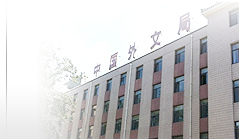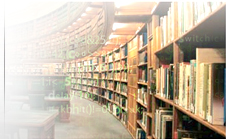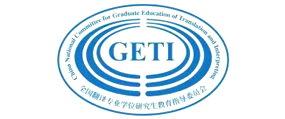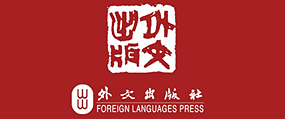目录
新时代翻译学科建构研究专栏 /
05 发展中的中国翻译学科:问题与对策 王东风
15 后学科时代翻译学科谱系的元理论反思与重构 庞秀成
23 翻译学科双轨创建范式论 黄忠廉 王小曼
译史纵横 /
31 译者意识形态复杂性下的汉译“昭雪伸冤” 罗选民 付添爵
译介研究 /
40 三国戏的译介与译者行为阶段性特征研究 李鹏辉 高明乐
49 “理”屈且词穷:麦格基与第一部朱子文献英译本 赖文斌 温湘频
翻译教学 /
59 语言服务本科人才培养:“翻译+技术”模式探索 韩林涛 刘和平
67 英汉交传口译学习者自我修正特征研究 唐芳
书刊评介 /
78 翻译知识体系构建的有益尝试——读《现代翻译知识史》 李伟 骆潇洋
学术访谈 /
85 把握翻译硕士培养内涵 提升教学研究自信——穆雷教授访谈录 曹新宇
译家研究 /
91 中国古典诗歌英译的探索者——宇文所安的诗歌译介路径与特质 陈婷婷
翻译评论 /
100 论汉英语用差异对翻译的影响——基于对《边城》四译本的对比分析 王建国 谢飞
学术视点 /
110 在转换生成语法和萨丕尔-沃尔夫假说之间——论乔治·斯坦纳阐释学翻译理论的源起 段小莉
118 梅肖尼克翻译思想及其历史人文价值 孙黎
翻译技术 /
126 多模态同传语料库的开发与建置——以职业译员英汉双向同传语料库为例 齐涛云 杨承淑
学术争鸣 /
136 “宏观调控”英译辨析 盛美娟 王姗
实践探索 /
143 《易经》视野下的敦煌艺术英译研究:以易释艺 以易导译 吴钧
153 军事历史学术著作翻译:问题与方法——以《诺门罕1939:改变二战走向的战役》汉译为例 王祥兵
161 《黄帝内经·素问》中“白”的英译探析 杜海潮 韩丑萍
166 翻译的忠实与通顺:从微观到宏观——第三十一届韩素音国际翻译大赛阿汉语对翻译评析 薛庆国
自学之友 /
171 A Gift for Mother’s Day(Ken Weber) 曹明伦译
174 译出感情,译出韵味,兼筹神形 曹明伦
178 “科学”概念的中国化(林巍) 林巍 译
181 概念转述中的辨析与重组 林巍
英文摘要
词语选译 新型冠状病毒肺炎疫情相关词汇英文表述(第二批)
本期主要论文摘要
新时代翻译学科建构研究专栏
发展中的中国翻译学科:问题与对策
王东风 中山大学
王东风 中山大学
摘要:本文聚焦中国特色的翻译学科在发展中所存在的问题,指出了制约中国翻译学科发展的三大瓶颈:即学科地位的尴尬、创新动能的不足和人才培养的脱节,并相应地提出了克服这些瓶颈的对策。本文认为,在中国推动“一带一路”建设的大背景下,中国的翻译学科正赶上一个难得的机遇,也面临诸多挑战。只有正视问题,明确发展目标,才能做好布局,使翻译学科发展的步伐跟上国家高速前进的节奏。
关键词:翻译学;学科发展;瓶颈;对策
中图分类号:H059文献标识码:A文章编号:1000-873X (2020) 03-0005-010
后学科时代翻译学科谱系的元理论反思与重构
庞秀成 东北师范大学
庞秀成 东北师范大学
摘要:翻译研究经历了前学科、学科、跨学科发展阶段,各种理论频现,分支学科迭出,翻译学科进入“后学科”时代。它必须反观自身,才能在整合、批评和建构中调整学科建设的方向。“元理论”有助于应对学科互涉的知识生产模式冲击,坚守学科本体,使学科建设由自觉走向自洽,即基于元理论反思翻译学科谱系设计中的元理论思想,论证其理论预设和前提等方面,重构概念模型。
关键词:翻译学科建设;元理论;翻译学科谱系;学科谱系隐喻;后学科时代
中图分类号:H059文献标识码:A文章编号:1000-873X (2020) 03-0015-08
翻译学科双轨创建范式论
黄忠廉 王小曼 广东外语外贸大学
黄忠廉 王小曼 广东外语外贸大学
摘要:40年来中外译学建设渐受关注,译学之独立地位已定,其创建之路却仍需方法论考量。本文基于中外译学创建现状与学科术语特点,论及本体译学与关系译学的双轨创建范式,涉及四种创建路径、四种创建逻辑方式,形成源于一、流至多而归于一的译学创建机制,拟为译学创建提供理论依据和方法论支撑。
关键词:本体译学;关系译学;双轨;创建范式
中图分类号:H059文献标识码:A文章编号:1000-873X (2020) 03-0023-08
译史纵横
译者意识形态复杂性下的汉译“昭雪伸冤”
罗选民 广西大学 | 付添爵 广东外语外贸大学
摘要:以往史学界与译学界都认为《巴麦尊照会》首句中汉译“昭雪伸冤”为“错译”。本文以史证译,通过检视“错译”之源及再梳史料,试图说明此汉译乃译者意识形态复杂性产物,即译者受到其认同的意识形态影响所做出的确当性选择,而这种复杂性或可表征为观念底层的“天朝观”。本文的拓展意义在于深度而全面地考量译者行为背后的多种意识形态操控,有益于今时之人对历史译文做出确当性评价。罗选民 广西大学 | 付添爵 广东外语外贸大学
关键词:天朝观;译者意识形态;历史记忆;以史证译
中图分类号:H059文献标识码:A文章编号:1000-873X (2020) 03-0031-09
译介研究
三国戏的译介与译者行为阶段性特征研究
李鹏辉 高明乐 北京语言大学
摘要:三国戏是京剧的重要组成部分,其故事情节主要取自中国古典小说《三国演义》。本文以上世纪中叶以前京剧三国戏中的戏文介绍和剧本译文作为研究对象,从翻译内和翻译外两个层面考察译者行为的阶段性特征。研究发现,从历史的角度来看,三国戏是在当时戏剧文学这一主流诗学操纵下走出国门的,满足了当时社会文化语境下目的语读者的阅读需求,译介的影响遍及当时的英语、法语、德语文化圈。在翻译内层面上,译者作为语言人采用异化为主、中西文化比较为辅的译介策略;在翻译外层面上,译者作为评论人对某些三国人物存在误读和误解,导致三国人物形象在西传的过程中有所失真。但不可否认的是,译者群体在文化“交游”中为三国故事在西方的传播与接受找到了新的突破口。李鹏辉 高明乐 北京语言大学
关键词:三国戏;译者行为批评;译者文化交游;人物形象
中图分类号:H059文献标识码:A文章编号:1000-873X (2020) 03-0040-09
“理”屈且词穷:麦格基与第一部朱子文献英译本
赖文斌 南开大学 | 温湘频上饶师范学院
赖文斌 南开大学 | 温湘频上饶师范学院
摘要:朱熹是儒家思想自宋以后的集大成者,其学说被称为朱子学,又称宋明理学,在中国哲学思想史上占有极重要的地位,其文献成为近代被西方关注最多的中华经典之一。其中的“理”又是朱子学的核心概念,包含世界自然规律和伦理道德两个方面。麦格基是英语世界第一个公开翻译出版朱子学文献的译者,为朱子学在英语世界的传播起了积极作用。本文尝试翻检麦格基“理”的英译,借用诠释学视角,探究“理”字的文化内涵,分析麦格基“理”的翻译,评价麦格基的翻译得失和在西方朱子学史的学术地位。
关键词:朱子学;理;麦格基;英译
中图分类号:H059文献标识码:A文章编号:1000-873X (2020) 03-0049-010
翻译教学
语言服务本科人才培养:“翻译+技术”模式探索
韩林涛 刘和平 北京语言大学
韩林涛 刘和平 北京语言大学
摘要:“一带一路”倡议在深入推进,人工智能技术快速发展,新技术应用层出不穷,语言服务行业一方面在面对技术的挑战,另一方面迎来升级换代的重大机遇。国家语言发展战略对语言服务人才培养提出了全新的要求。本文基于北京语言大学翻译专业在过去四年的跨学科语言服务本科人才培养经验,从培养目标、契合点、培养内容和手段等不同角度探索“翻译+技术”人才培养模式,为新文科背景下翻译人才培养的改革和专业建设提供具体案例。
关键词:语言服务;翻译+技术;本地化
中图分类号:H059文献标识码:A文章编号:1000-873X (2020) 03-0059-08
英汉交传口译学习者自我修正特征研究
唐芳 广东外语外贸大学
唐芳 广东外语外贸大学
摘要:本研究考察了12位口译学习者对同一场发言的英汉交替传译产品,对其中的自我修正现象进行了系统描述,由此构建了更贴合口译特征的自我修正现象分类框架,弥补了前人分类的不足。文章总结了口译学习者英汉交替传译中自我修正的特点,并结合案例分析向学习者提出了几点建议。
关键词:自我修正;类型;特征;口译学习者;英汉交替传译
中图分类号:H059文献标识码:A文章编号:1000-873X (2020) 03-0067-011
书刊评介
翻译知识体系构建的有益尝试
——读《现代翻译知识史》
李伟 黑龙江大学 | 骆潇洋大连外国语大学
——读《现代翻译知识史》
李伟 黑龙江大学 | 骆潇洋大连外国语大学
摘要:全球数字化时代背景下,新型翻译样态与场景不断涌现与更迭,促使翻译活动在诸多方面发生深刻变革,翻译知识的形态与生产主体趋向多元。加强对翻译知识的描述与归纳具有现实必要性,对翻译学学科建设意义深远。《现代翻译知识史》系统描述了现代翻译知识图景,构建了颇具创新性的现代翻译知识体系,具有较高的学术价值与实践意义。本文阐释了该书的内容主题,归纳了其编写特色,剖析了其学术贡献,并探讨了该书在翻译知识教材编写、跨学科翻译研究路径、中国特色翻译学话语体系构建等方面的启示意义。
关键词:翻译知识体系;跨学科研究路径;中国特色翻译学;话语体系构建
中图分类号:H059文献标识码:A文章编号:1000-873X (2020) 03-0078-07
学术访谈
把握翻译硕士培养内涵 提升教学研究自信
——穆雷教授访谈录
曹新宇 南京农业大学
——穆雷教授访谈录
曹新宇 南京农业大学
摘要:穆雷教授基于自己十余年的调查、实践和研究,指出要把握翻译硕士(MTI, Master of Translation and Interpreting)人才培养内涵,理念转变至关重要。她对课程设置、翻译技术、实习实践等培养过程的重要环节提出了自己独到的见解。她认为,我国的翻译教育研究还需进一步深入,因为丰富的翻译教学资源为我们开展研究提供了便利条件,中国学者要确立自己的学术研究自信。
关键词:翻译硕士;理念转变;把握内涵;研究自信
中图分类号:H059文献标识码:A文章编号:1000-873X (2020) 03-0085-06
译家研究
中国古典诗歌英译的探索者
——宇文所安的诗歌译介路径与特质
陈婷婷 安徽大学
——宇文所安的诗歌译介路径与特质
陈婷婷 安徽大学
摘要:中国古典诗歌是中国文学中最具中国元素的形式,而中国古典诗歌外译又是中国文化走出去的重要组成部分。美国著名翻译家、汉学家宇文所安对中国古典诗歌在英语世界乃至全世界范围内的译介和传播做出了卓越的贡献。在中国古典文学外译过程中,翻译家的翻译动机作为翻译的主体因素之一,对翻译文本的选择和翻译策略的选取起到直接决定性的作用。本文拟从翻译家的翻译动机如何对整个翻译活动产生决定性的影响出发,探析宇文所安的翻译动机、翻译观念、翻译路径以及翻译副文本对中国古典诗歌外译和读者接受所带来的影响,以期探索中国文化走出去的有效途径。
关键词:中国古典诗歌;宇文所安;译介;动机;策略
中图分类号:H059文献标识码:A文章编号:1000-873X (2020) 03-0091-09
翻译评论
论汉英语用差异对翻译的影响
——基于对《边城》四译本的对比分析
王建国 华东理工大学 | 谢飞华东师范大学
——基于对《边城》四译本的对比分析
王建国 华东理工大学 | 谢飞华东师范大学
摘要:本文从《边城》的四个译本着手,结合汉英语用取向差异,分析译者母语的语用取向对翻译的影响。研究发现,译文较原文而言普遍体现出更强的结果取向,在表意上多次比原文更推进,此外,英语母语者相对汉语母语者而言,其结果取向思维更突出,而汉语母语者则更容易受到汉语过程取向思维的影响。当然,本文只是从语用取向一个方面比较了四个译本,但是不能认定谁的译本更具结果取向就更好,结果取向的度受制于翻译语境,若过度,则可能导致抽象,从而失去文学性,故推进也应当适度。
关键词:《边城》;四个译本;语用差异;结果取向
中图分类号:H059文献标识码:A文章编号:1000-873X (2020) 03-0100-010
学术视点
在转换生成语法和萨丕尔-沃尔夫假说之间
——论乔治·斯坦纳阐释学翻译理论的源起
段小莉 上海交通大学
——论乔治·斯坦纳阐释学翻译理论的源起
段小莉 上海交通大学
摘要:西方比较文学界泰斗乔治·斯坦纳于2020年2月3日在伦敦逝世嘆。终其一生,斯坦纳著作等身,成果斐然。然而,斯坦纳的学术思想在我国学界受到的关注却相对较少,对其阐释学翻译理论渊源的探究更是鲜有人问津。本文试图立于阐释学翻译理论生成的历史学术语境,从理论动机、学术遭遇、生存空间和运作机制等几个方面挖掘和分析其阐释学翻译理论的源起。研究认为,斯坦纳出于对言语多样性的切身感悟而不能苟同于致力于建构普世语法的“转换生成语法”,但在倾向于“萨丕尔-沃尔夫假说”的同时又不完全接受其理论,阐释翻译理论的建构恰恰完成于与前面两者的对话之中,也借此积淀了大量的理论思想,并在折中主义治学思想下建构出了独特的译学理论。
关键词:乔治·斯坦纳;阐释学翻译理论;转换生成语法;“萨丕尔-沃尔夫假说”
中图分类号:H059文献标识码:A文章编号:1000-873X (2020) 03-0110-08
梅肖尼克翻译思想及其历史人文价值
孙黎 陕西科技大学
孙黎 陕西科技大学
摘要:法国当代著名翻译家、诗人和翻译理论家亨利·梅肖尼克基于多年的圣经和诗歌翻译实践,发展了不同于主流的、大胆而独特的语言认识论。以节奏思想和翻译伦理为核心的翻译诗学理论更是梅肖尼克对当代译学的重要贡献。在新的历史时期,翻译仍然面临着科学主义与人文主义、符号与诗的抵牾。实践翻译的人文精神,坚守翻译的精神价值,需要翻译伦理研究逐步完成从“规范”到“价值”到“人”的重心转向。了解和研究梅肖尼克语言哲学运思中的“人本观”和翻译思想的历史人文价值,能为新时期的翻译实践和翻译理论探索带来新的认识和思考。
关键词:梅肖尼克;翻译诗学;节奏;翻译伦理
中图分类号:H059文献标识码:A文章编号:1000-873X (2020) 03-0118-08
翻译技术
多模态同传语料库的开发与建置
——以职业译员英汉双向同传语料库为例
齐涛云 杨承淑 辅仁大学
摘要:不同于传统的单模态文本口译语料库,多模态口译语料库可以通过多媒体技术呈现贴近口译交际现场的多层次充盈意义。与交传相比,同传在多模态信息的呈现方式上存在其特别之处:译员的“隐身性”导致身势语等视觉模态信息发挥的作用较弱;传译的“同步性”则意味着原文和译文两类听觉模态信息以并行而非线性方式排布。职业译员英汉双向同传语料库(ECTSIC-P)的设计原则体现了这些同传多模态特征。本文以ECTSIC-P为例,介绍了多模态同传语料库建置过程中的主要问题,包括语料资源库的建立和语料研究库的语料选择、语料预处理、多模态转写与标注、多模态库与文本库的转换、文件结构等。——以职业译员英汉双向同传语料库为例
齐涛云 杨承淑 辅仁大学
关键词:职业译员英汉双向同传语料库;多模态语料库;口译研究
中图分类号:H059文献标识码:A文章编号:1000-873X (2020) 03-0126-010
学术争鸣
“宏观调控”英译辨析
盛美娟 烟台大学 ︳王姗 北京外国语大学
盛美娟 烟台大学 ︳王姗 北京外国语大学
摘要:“宏观调控”是中国国民经济学术语,是中国经济奇迹和中国模式的重要组成部分,也是中国特色外宣热词,然而至今未有统一规范之英文译文。本文对宏观调控的形成和演进追根溯源,对现有英译进行辨析,探求其准确译文,旨在使国际社会更为准确地理解宏观调控的内涵,助力中国外宣。
关键词:宏观调控;macroeconomic regulation;外宣
中图分类号:H059文献标识码:A文章编号:1000-873X (2020) 03-0136-07
实践探索
《易经》视野下的敦煌艺术英译研究:
以易释艺 以易导译
吴钧 河西学院 / 山东大学
以易释艺 以易导译
吴钧 河西学院 / 山东大学
摘要:《易经》是中华民族文化的源头活水,它与翻译研究也是息息相关的。中国自古就有“译即易”的翻译思想与认识。本论文从《易经》三易的“不易”、“简易”、“变易”的视野出发,分别对敦煌艺术“真”、“善”、“美”的三个特征进行对比分析,进而探究与之相适宜的“直译”、“象译”和“变译”的翻译策略。即将敦煌艺术“不易”的艺术真谛与相应的“直译”法相结合,探究敦煌变文的英译;将佛教艺术“善”在敦煌壁画中“简易”的形象表达与相应的“符际翻译”即“象译”相结合;将敦煌艺术的“变易”之“美”与其相应的“变译”翻译策略融会贯通。本文旨在对敦煌艺术的精华要素变文和壁画的外宣英译进行思考和探究。
关键词:敦煌艺术;易经三易;直译;象译;变译
中图分类号:H059文献标识码:A文章编号:1000-873X (2020) 03-0143-010
军事历史学术著作翻译:问题与方法
——以《诺门罕1939:改变二战走向的战役》汉译为例
王祥兵 国防科技大学
——以《诺门罕1939:改变二战走向的战役》汉译为例
王祥兵 国防科技大学
摘要:军事历史学术著作翻译的困难通常体现在需要扎实的军事专业知识,需要还原历史细节和真实,需要对相关主题作深度学术研究。本文以汉译英文军事历史学术著作《诺门罕1939:改变二战走向的战役》为基础,从军事专业知识的翻译、专有名词的翻译、平行文本的运用、政治因素以及译者情感五个方面,来探讨军事历史学术著作翻译中一些普遍问题及其解决方法。
关键词:军事历史学术著作;翻译;《诺门罕1939:改变二战走向的战役》
中图分类号:H059文献标识码:A文章编号:1000-873X (2020) 03-0153-08
《黄帝内经·素问》中“白”的英译探析
杜海潮 韩丑萍 上海中医药大学
杜海潮 韩丑萍 上海中医药大学
摘要:颜色词在中医典籍中出现的频率较高。《黄帝内经》中的“白”主要被用作颜色词,以形容事物的颜色状态。但结合具体语境可以发现,“白”的内涵有所差异,不能一概翻译成white。本文将结合其《素问》中的实例对不同语境下“白”的英译进行探析。
关键词:《黄帝内经·素问》;颜色词;“白”;翻译
中图分类号:H059文献标识码:A文章编号:1000-873X (2020) 03-0161-05
本期主要论文英文摘要
(英文摘要修订:刘亚猛)
(英文摘要修订:刘亚猛)
Translation Studies as a Developing Discipline in China: Problems and Solutions
By WANG Dongfeng (Sun Yat-sen University, Guangzhou, China) p. 5
By WANG Dongfeng (Sun Yat-sen University, Guangzhou, China) p. 5
Abstract: This paper calls attention to the existing problems in Translation Studies as a developing discipline in China, pinpointing three bottlenecks that restrain its development in particular, i.e. the ambiguity of its disciplinary status, the lack of innovation momentum, and the inadequacy of its system for professional training. Whereas China’s current promotion of “the belt and road initiative” has spotlighted these shortfalls, it also affords the discipline a rare opportunity to solve the problems. Only by facing up to the difficulties and clarifying its development goals can China’s TS come up with a promising blueprint for its disciplinary development, one that would keep pace with the demand which the country’s rapid socio-economic growth has placed on its practitioners.
Keywords: Translation Studies; discipline development; bottleneck; problem solving
Meta-theoretical Reexamination and Reconstruction of the Post-disciplinary Translation Studies
By PANG Xiucheng (Northeast Normal University, Changchun, China) p.15
Abstract: Having undergone its pre-disciplinary, disciplinary, and transdisciplinary stages of development and grown into an area made up of a multitude of theories and sub-disciplines, Translation Studies is now entering its post-disciplinary era. To further develop itself, it is necessary that the discipline become self-reflexive, making special efforts to reexamine and reorient itself in order to adopt a mode of integration, criticism and reconstruction. To switch to the new mode, a meta-theoretical perspective should also be adopted. Only such a perspective could enable TS to meet the challenge of knowledge production under the condition of cross-disciplinary involvement, and to regain and maintain its internal coherence under the pressure of self-consciousness.By PANG Xiucheng (Northeast Normal University, Changchun, China) p.15
Keywords: discipline; post-disciplinarity; construction; translation studies; metatheory; metaphor
A Double-track Paradigm for the Development of Translatology
By HUANG Zhonglian & WANG Xiaoman (Guangdong University of Foreign Studies, Guangzhou, China) p.23
By HUANG Zhonglian & WANG Xiaoman (Guangdong University of Foreign Studies, Guangzhou, China) p.23
Abstract: Even though researches on translatology over the past four decades have won a widely acknowledged disciplinary status for the area of studies, its self-construction remains methodologically deficient. Taking the current state of its disciplinary and terminological development into consideration, this paper proposes a double-track paradigm by synthesizing an ontological and a relational conception of translatology. Consisting of four paths and four logical modes as its constructive mechanisms, such a paradigm aims to provide both a theoretical basis and a methodological support for a sustained development of translatology, enabling it to develop itself from one formation into many, and finally to converge back to one again.
Keywords: translatology; ontological conception; relational conception; double-track; paradigm for development
The Complexity of the Translator’s Ideological Makeup and the Peculiar Rendition of an Opium War-related Diplomatic Document
By LUO Xuanmin (Guangxi University, Nanning, China) & FU Tianjue (Guangdong University of Foreign Studies, Guangzhou, China) p.31
By LUO Xuanmin (Guangxi University, Nanning, China) & FU Tianjue (Guangdong University of Foreign Studies, Guangzhou, China) p.31
Abstract: While it has long been a scholarly consensus that a key phrase in Lord Palmerston’s Letter to the Minister of the Emperor of China -- “to demand from The Emperor satisfaction and redress”-- was erroneously rendered in the Chinese version of the official correspondence, not much interest has been generated in what had caused the mistranslation. This paper, by taking a close look at what has led scholars to concur about the “error”, and by taking the historical circumstances concerned into consideration as well, comes to the conclusion that what had caused the error is above all the complexity of the translator’s ideological constitution, especially his internalization of the concept of the Celestial Empire. This discovery highlights the importance in translation studies of paying more attention to ideological manipulation behind the behavior of translators.
Keywords: concept of the Celestial Empire; the translator’s ideology; historical memory; historical reflection of translation
McClatchie and the Earliest English Translation of Neo-Confucianism
By LAI Wenbin (Nankai University, Tianjin, China) & WEN Xiangpin (Shangrao Normal University, Shangrao, China) p.49
By LAI Wenbin (Nankai University, Tianjin, China) & WEN Xiangpin (Shangrao Normal University, Shangrao, China) p.49
Abstract: As the founder of Neo-Confucianism, Zhu Xi of the Song dynasty has been regarded as yet another great synthesizer of Chinese thought after Confucius, and has thus occupied a prominent position in the long tradition of Chinese philosophy. His works, with li (rational principle) as their core concept, are among the most cited Chinese Classics in the West since their first translation into English by Thomas McClatchie. This article analyzes Zhu Xi’s notion of li in all its disparate semantic aspects, and then looks into McClatchie’s way of handling this key concept. Subjecting his rendition to a critical evaluation, we explore what underlies the long-lasting influence which McClatchie’s English version of Zhu Xi has exerted on the Neo-Confucian Studies in the West.
Keywords: Zhu Xi; Neo-Confucianism; Li; McClatchie; C-E Translation
A “Translation + Technology” Model of Training for Interdisciplinary Language Service
By HAN Lintao & LIU Heping (Beijing Language and Culture University, Beijing, China) p.59
By HAN Lintao & LIU Heping (Beijing Language and Culture University, Beijing, China) p.59
Abstract: The urgent need to implement the “One Belt, One Road” initiative and the rapid development of artificial intelligence technologies have challenged China’s language service industry to bring up a new generation of translators with an updated set of knowledge and skills. To take up the challenge, Beijing Language and Culture University has conducted a pilot study of undergraduate-level translator training over the past four years. On the basis of the study, a “Translation + Technology” model of professional training is here proposed as the way to reform China’s language education so that it can better prepare and equip college language majors for meeting the human resources need of the country’s interdisciplinary language service.
Keywords: language service; AI; translator training; Translation + Technology; localization
Features of Interpreting Learners’ Self-repairs in English-Chinese Consecutive Interpreting
By TANG Fang (Guangdong University of Foreign Studies, Guangzhou, China) p.67
By TANG Fang (Guangdong University of Foreign Studies, Guangzhou, China) p.67
Abstract: This paper analyzes the products of 12 trainees’ English-Chinese consecutive interpreting for the same speech. On the basis of a systematic examination of how self-repair was used in their work, the paper proposes a new interpreting-tailored framework for classifying the various ways such a strategy is employed in CI, with a view to helping overcome the shortages of previous taxonomies. By identifying features of CI learners’ uses of self-repair in actual practices, the paper also shows the trainees concerned how they could improve their interpreting performance by appropriately using self-repair strategy.
Keywords: self-repair; frame of classification; interpreting trainee; English-Chinese consecutive interpreting
How Pragmatic Differences Between English and Chinese Affect Four English Versions of Biancheng
By WANG Jianguo (East China University of Science and Technology, Shanghai, China) & XIE Fei (East China Normal University, Shanghai, China) p.100
By WANG Jianguo (East China University of Science and Technology, Shanghai, China) & XIE Fei (East China Normal University, Shanghai, China) p.100
Abstract: This paper studies how the pragmatic differences between English and Chinese affect the four available English versions of Biancheng, a modern Chinese literary classic by Shen Congwen. It finds that pragmatically speaking, the translations as a whole tend to be more result-oriented than the original text, and that compared with their native English-speaking counterparts, native Chinese-speaking translators are more likely to be influenced by the pragmatic characteristics of Chinese and hence are more process- rather than result-oriented. However, excessive result-orientation might lead to undue abstractness and to a loss of literariness in the translation. Result-orientation hence does not necessarily guarantee a good rendition.
Keywords: Biancheng; English version; pragmatic difference; result-orientation
Transformational Generative Grammar, Sapir-Whorf Hypothesis, and the Source of George Steiner’s Hermeneutic Theory of Translation
By DUAN Xiaoli (Shanghai Jiao Tong University, Shanghai, China) p.110
By DUAN Xiaoli (Shanghai Jiao Tong University, Shanghai, China) p.110
Abstract: For all his outstanding achievements and universal fame as a medio-translatological theorist, the recently deceased George Steiner has received little attention from fellow Chinese translation scholars so far, and no effort, in particular, has been made in China to investigate the source of his hermeneutic theory of translation. To do justice to his great scholarship, this paper attempts to study the driving forces that had motivated and informed his theorization in the beginning. By taking into consideration those historico-contextual factors that helped to shape Steiner’s thinking about translation, such as the general conditions of human existence, the academic situation, and the available mechanisms for advancing scholarship, the study concludes that while Steiner’s multilingual experiences had led him to take a deep interest in both Chomsky’s Transformational Generative Grammar (TGG) and the Sapir-Whorf Hypothesis (SWH), he fully embraced neither. Rather, it is by initiating and sustaining a dialogue between the two perspectives that Steiner came to define his own theoretical position concerning translation.
Keywords: George Steiner; source; hermeneutic translation theory; Transformational Generative Grammar; Sapir-Whorf Hypothesis
Designing and Building Simultaneous Interpreting Corpus with Multi-modalities: With ECTSIC-P as an Example
By QI Taoyun & YANG Chengshu (Fu Jen Catholic University, New Taipei, China) p.126
By QI Taoyun & YANG Chengshu (Fu Jen Catholic University, New Taipei, China) p.126
Abstract: The multimodal corpus, unlike traditional interpreting corpus with text as its single modality, can display multi-tiered saturated meanings of interpreting events with the help of multimedia tools. And SI’s way of information display is likewise different from that of CI. The SI interpreter is usually hidden from the sight of speaker and audience, making visual information less relevant. The simultaneity of SI decides that audio information is delivered in parallel rather than in series. This paper calls attention to the fact that the above-mentioned uniqueness of multimodal corpus and SI has been taken into consideration in the designing of ECTSIC-PS. Using ECTSIC-PS as an example, it then discusses major issues in the construction of multimodal SI corpus, such as those encountered in the building of archive and the sampling, preprocessing, transcribing and annotation of multimodal research corpus, in the generation of text corpus from the multimodal one, and in the construction of the logical structure of files in the research corpus.
Keywords: ECTSIC-P; multimodal corpus; SI; interpreting studies















